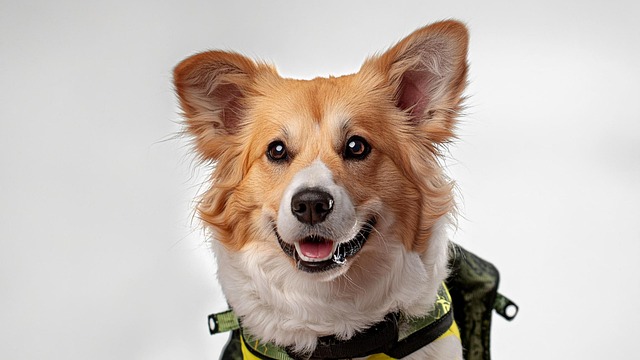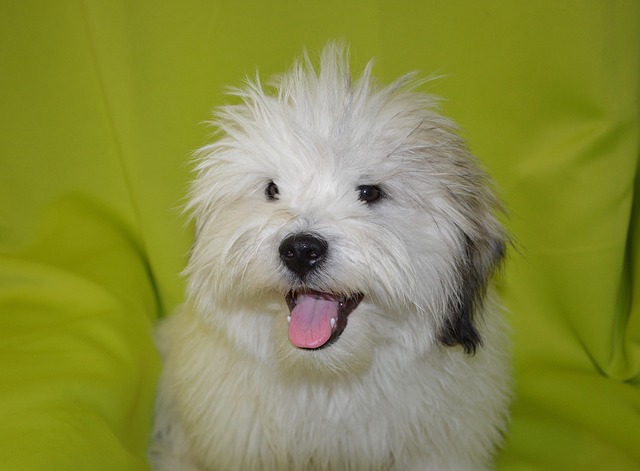
At what age do dogs get food allergies?
When we stroke our fluffy beloved dogs and watch them wagging their tails while enjoying their food, we rarely think that seemingly ordinary food can be an "invisible killer" that harms them.
When stroking the soft hair of a dog and watching it run happily in the sun, every owner hopes that this beauty can last forever. However, fungi hidden in life may quietly threaten the health of dogs. Once a dog is infected with fungi, symptoms such as itching, hair loss, and skin ulcers not only make them miserable, but also hurt their owners. Preventing fungal infections in dogs is like building a solid health defense line for them, using professional knowledge and endless care to protect this precious companionship.
Understanding the survival habits and transmission routes of fungi is the first step in preventing infection. Fungi like warm and humid environments, just like finding a comfortable "home". Dogs playing in muddy grass after rain, not drying their hair in time after bathing, and living in poorly ventilated and humid environments all create conditions for fungal growth. At the same time, fungi are also highly contagious. Dogs may be infected if they come into contact with other dogs infected with fungi, or share combs, mats and other items. Imagine that when dogs are infected with fungi because of contact with sick companions or using unclean items, the discomfort and grievance revealed in their innocent eyes will make their owners feel guilty and distressed. Therefore, only by deeply understanding the characteristics of fungi can we prevent them in a targeted manner.
Keeping the dog's body clean and dry is the key to preventing fungal infections. Bathing dogs regularly can effectively remove dirt and potential fungal spores on the skin surface. However, the frequency of bathing should be moderate. Too frequent bathing will damage the natural oil layer of the dog's skin and reduce the skin's resistance; too low a frequency will not be able to clean in time. Generally speaking, it is more appropriate to bathe once every 1-2 weeks in summer and once every 3-4 weeks in winter. During the bathing process, use a pet-specific shower gel to gently clean the hair and skin, and avoid using human bathing products, because the pH value of dog skin is different from that of humans, and inappropriate bathing products may irritate the skin. After bathing, the most important thing is to blow dry the hair in a timely and thorough manner, from the top of the head to the tip of the tail, and no part can be left out. You can first use a towel to absorb as much moisture as possible, and then use a hair dryer to blow dry along the direction of the hair to ensure that the skin and hair are completely dry. Watching the dog shaking comfortably under the warm airflow of the hair dryer, the owner is full of relief, because each of these meticulous steps is contributing to the prevention of fungi.
 In addition to physical cleaning, the dog's living environment also needs careful maintenance. Prepare a clean, dry, and well-ventilated nest for the dog, regularly clean and replace the mats and blankets of the dog nest, and expose them to the sun for sterilization. The floor, corners, and other places where dogs often move in the house should also be cleaned and disinfected regularly. You can use a pet-specific disinfectant, dilute it according to the instructions, and wipe the floor and furniture, which can effectively kill fungi without causing harm to the dog. When you see the dog sleeping peacefully in a clean and tidy nest, or rolling happily on the fresh floor, the owner will feel at ease from the bottom of his heart, knowing that he has created a healthy living space for the dog.
In addition to physical cleaning, the dog's living environment also needs careful maintenance. Prepare a clean, dry, and well-ventilated nest for the dog, regularly clean and replace the mats and blankets of the dog nest, and expose them to the sun for sterilization. The floor, corners, and other places where dogs often move in the house should also be cleaned and disinfected regularly. You can use a pet-specific disinfectant, dilute it according to the instructions, and wipe the floor and furniture, which can effectively kill fungi without causing harm to the dog. When you see the dog sleeping peacefully in a clean and tidy nest, or rolling happily on the fresh floor, the owner will feel at ease from the bottom of his heart, knowing that he has created a healthy living space for the dog.
A balanced diet and adequate exercise can enhance the dog's immunity and enable it to better resist fungal invasion. Choose high-quality dog food with comprehensive nutrition for your dog. Food rich in protein, vitamins and minerals can provide sufficient energy for the body. At the same time, add some fresh vegetables and fruits, such as carrots, apples, etc., to supplement vitamins and dietary fiber. In addition, ensure that your dog has enough exercise time every day, whether it is running and playing in the park or playing catch at home. Exercise can not only keep your dog in good shape, but also promote blood circulation and enhance body resistance. Seeing your dog full of energy during exercise, the owner will also be happy, because a healthy body is the basis for preventing all diseases.
Taking your dog for a physical examination regularly is also an important measure to prevent fungal infections. Veterinarians can detect potential health problems in time through professional examinations, including whether there are early signs of fungal infections. For example, slight skin redness and hair loss may be a precursor to fungal infection. Intervention when the condition is not serious can greatly reduce the difficulty of treatment and the dog's pain. Every time you take your dog to the hospital, the owner is nervous and expectant, nervous because he is afraid that there will be problems with the dog's body, and expecting that the examination results will be normal. When you hear the veterinarian say that the dog is healthy, the feeling of relief is the best reward for the owner's careful care. Preventing fungal infections in dogs is a manifestation of the owner's deep love for their furry children. Every careful cleaning, every well-prepared food, and every joyful game are all protecting the health of the dog. This road of prevention may take a lot of time and energy, but when we see the dog grow up healthily and happily, responding to our love with warm hugs and cheerful tail wags, all the efforts become extremely worthwhile. Let us use our expertise and love to support a healthy sky for dogs, keep them away from fungal troubles, and enjoy a wonderful life.

When we stroke our fluffy beloved dogs and watch them wagging their tails while enjoying their food, we rarely think that seemingly ordinary food can be an "invisible killer" that harms them.

When the fluffy little dog leaves the warm embrace of its mother dog and starts to face the world independently, its ignorant and dependent eyes make every owner feel affectionate.

In the late night pet hospital, under the incandescent light, you watch your dog struggling to move its body, every step accompanied by a slight tremble,

When our furry friends at home scratch frequently, sneeze incessantly, or show symptoms such as diarrhea and ear inflammation, the hearts of every pet owner are gripped with worry.

When you squat down and want to stroke that once fluffy Corgi, your palm gets covered with large amounts of dog hair.

When the furry little golden fur happily falls into your arms, with a faint odor or soil left behind from playing, bathing it becomes a necessary and challenging task.